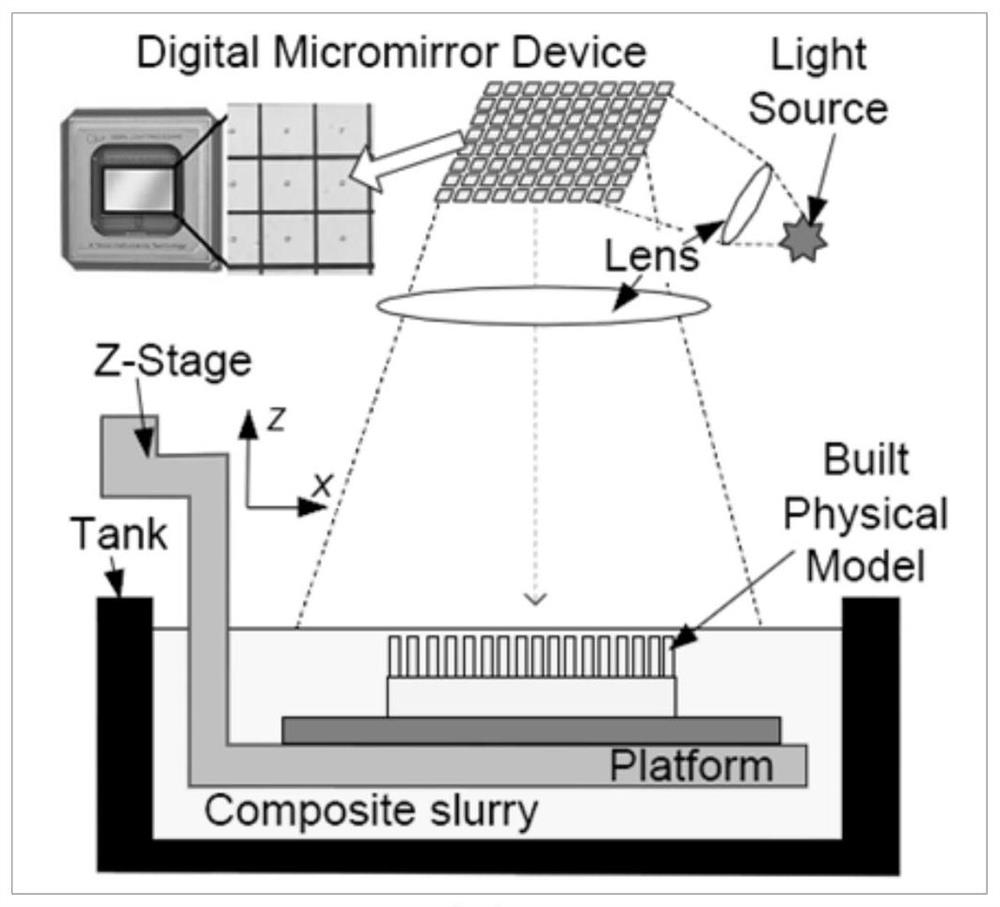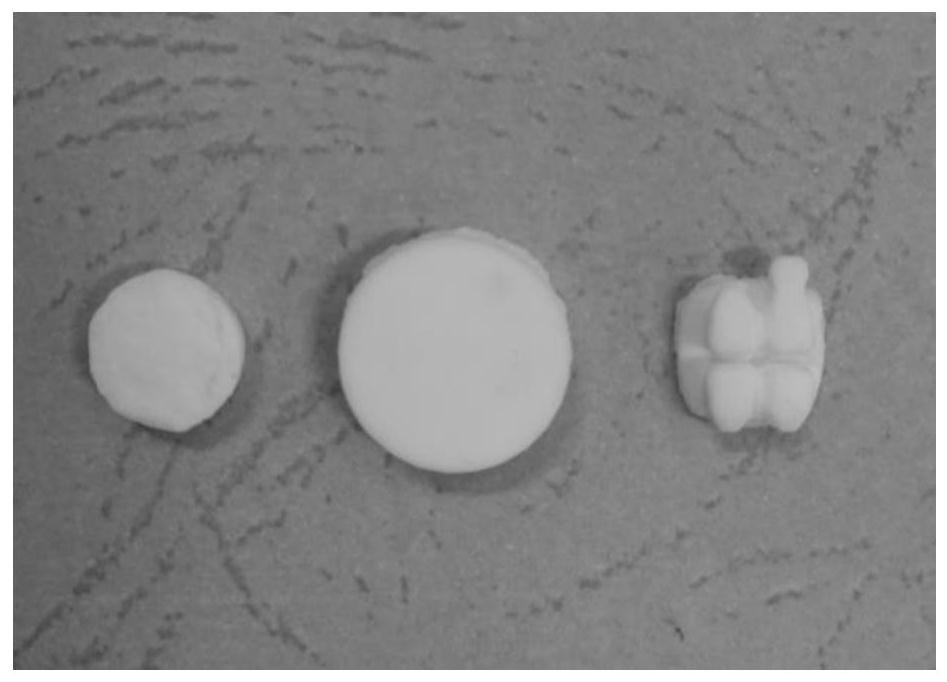A method suitable for self-healing/self-reinforcing 3D-printed ceramic parts based on stereolithography
A light-curing molding and 3D printing technology, which is applied in the direction of additive processing, can solve the problem of low solid phase content, achieve high density, increase the density of green bodies, and repair microscopic cracks
- Summary
- Abstract
- Description
- Claims
- Application Information
AI Technical Summary
Problems solved by technology
Method used
Image
Examples
Embodiment 1
[0121] (1) Green body preparation
[0122] The photocurable premix is prepared with ethoxylated pentaerythritol tetraacrylate, methyl amyl alcohol, polydimethylsiloxane, etc. in a ratio of 100:2:2, and then mixed with alumina ceramic powder at a solid content of 36 vol% (i.e. The ceramic powder accounts for the volume ratio of the photocurable ceramic slurry) and is mixed to prepare the alumina photocurable slurry. The main process parameters of photo-curing were optimized and selected, the exposure time was 6s, the layer thickness was 10 μm, and then the photo-cured ceramic slurry was subjected to photo-curing treatment, and the obtained alumina body was first subjected to vacuum degreasing, and then air degreasing, and the heating rate was uniform. The temperature is 5°C / min, the maximum temperature is 650°C, and the holding time is 2h. Then pre-sintering treatment is carried out, the pre-sintering temperature is 1100°C, the heating rate is 5°C / min, and the holding time i...
Embodiment 2
[0133] Example 2 Zirconia
[0134] (1) Green body preparation
[0135] The light-curing premix is prepared with ethoxylated pentaerythritol tetraacrylate, methyl amyl alcohol, polydimethylsiloxane, etc. in a ratio of 100:2:2, and then mixed with alumina ceramic powder at a solid content of 37 vol% (i.e. The ceramic powder accounts for the volume ratio of the photocurable ceramic slurry) and is mixed to prepare the zirconia photocurable slurry. The main process parameters of photo-curing were optimized and selected, the exposure time was 6s, the layer thickness was 10 μm, and then the photo-cured ceramic slurry was subjected to photo-curing treatment, and the obtained alumina body was first subjected to vacuum degreasing, and then air degreasing, and the heating rate was uniform. The temperature is 5°C / min, the maximum temperature is 650°C, and the holding time is 2h. Then pre-sintering treatment is carried out, the pre-sintering temperature is 1100°C, the heating rate is 5...
PUM
| Property | Measurement | Unit |
|---|---|---|
| porosity | aaaaa | aaaaa |
| porosity | aaaaa | aaaaa |
| porosity | aaaaa | aaaaa |
Abstract
Description
Claims
Application Information
 Login to View More
Login to View More - R&D
- Intellectual Property
- Life Sciences
- Materials
- Tech Scout
- Unparalleled Data Quality
- Higher Quality Content
- 60% Fewer Hallucinations
Browse by: Latest US Patents, China's latest patents, Technical Efficacy Thesaurus, Application Domain, Technology Topic, Popular Technical Reports.
© 2025 PatSnap. All rights reserved.Legal|Privacy policy|Modern Slavery Act Transparency Statement|Sitemap|About US| Contact US: help@patsnap.com



